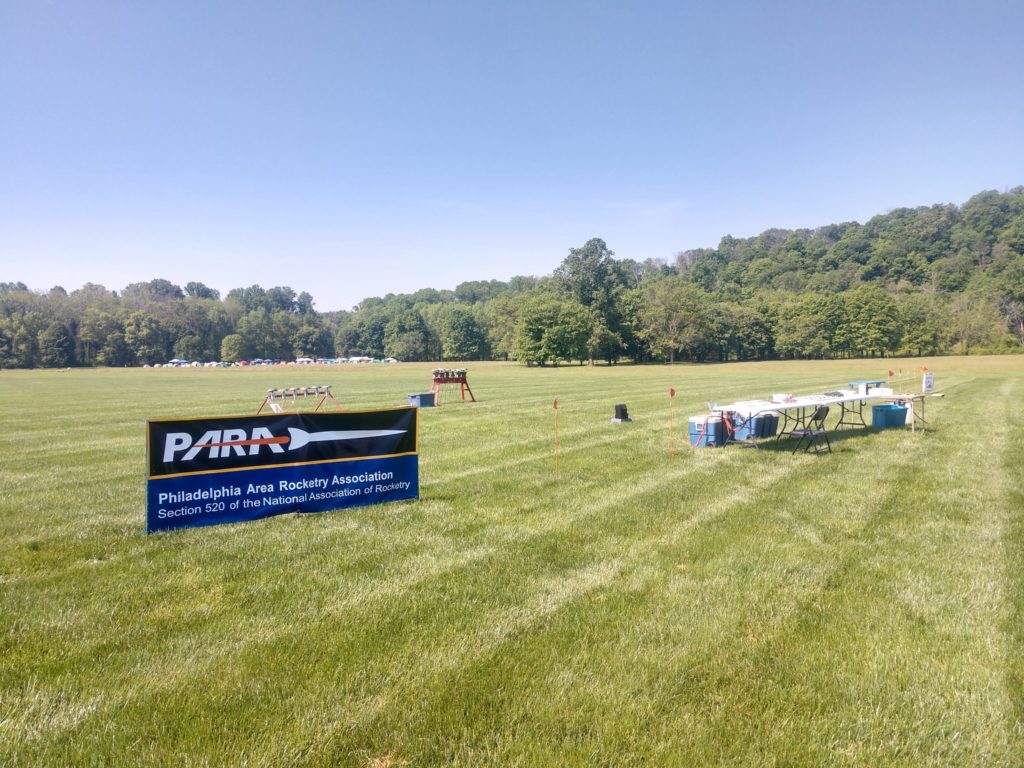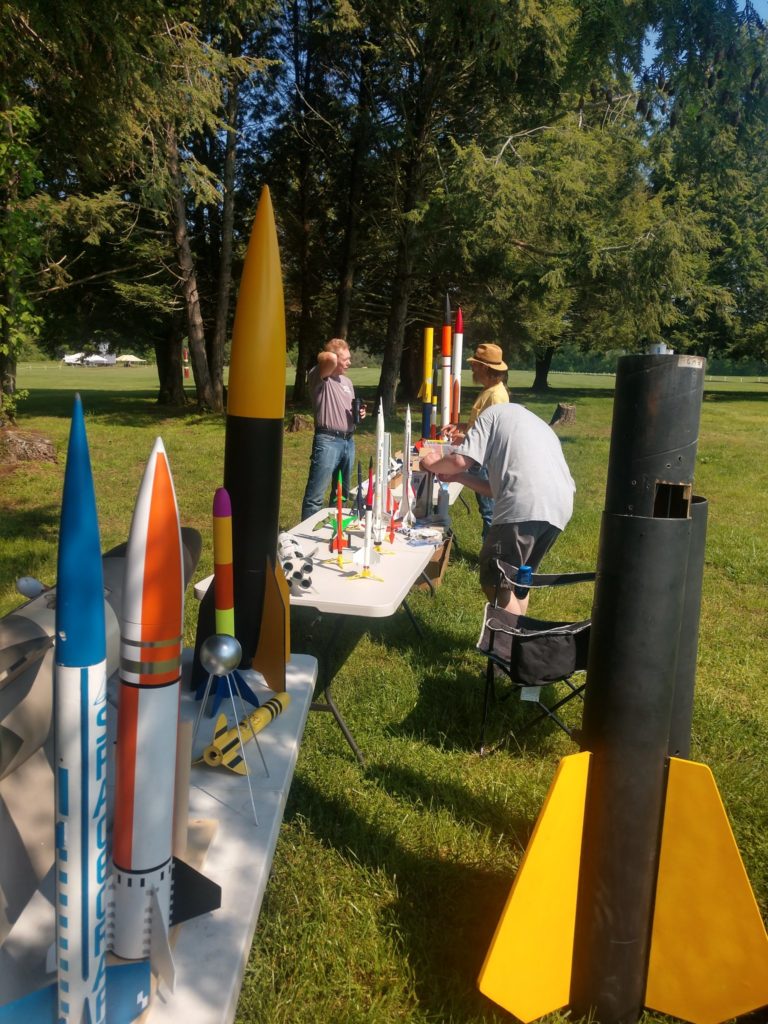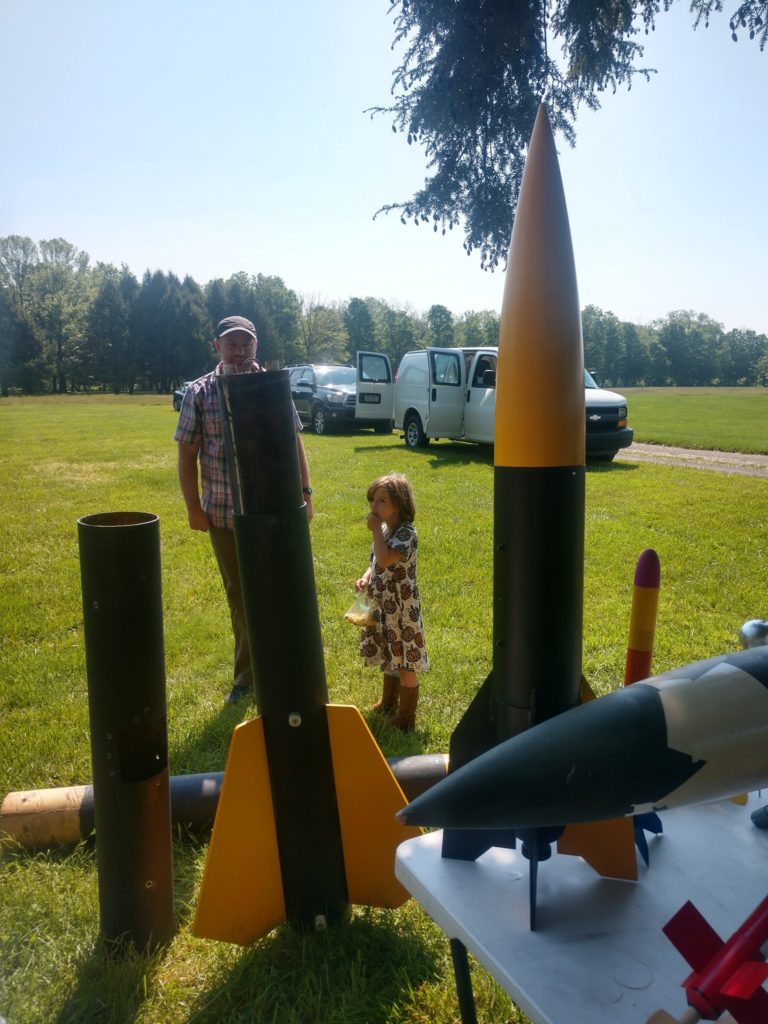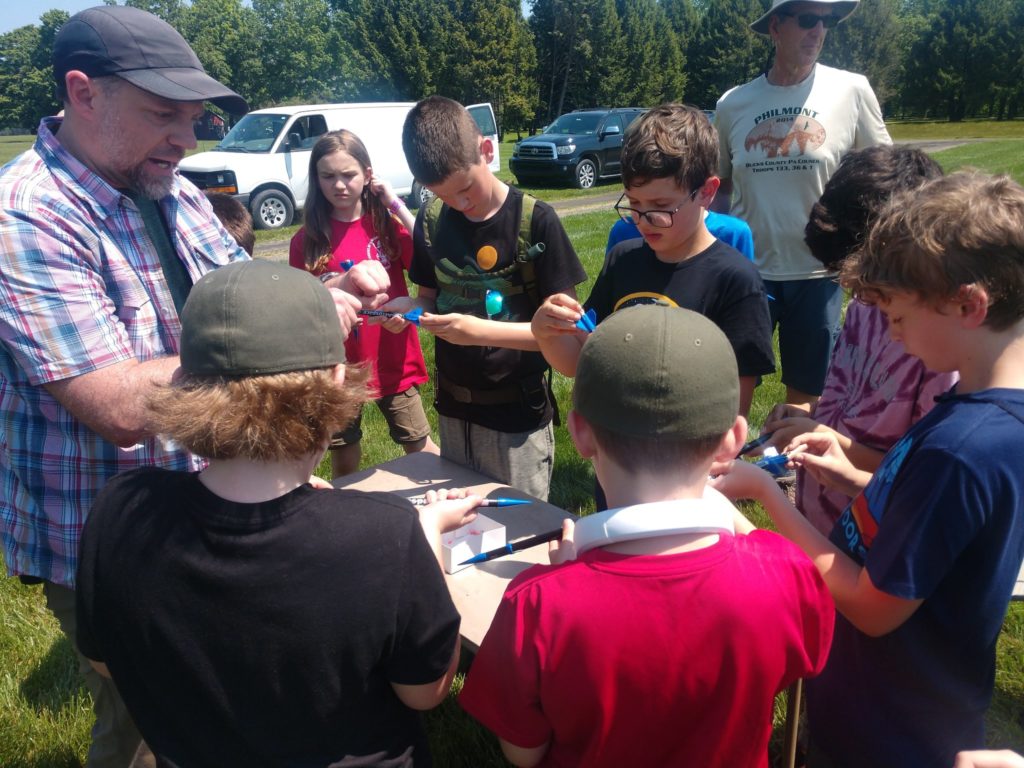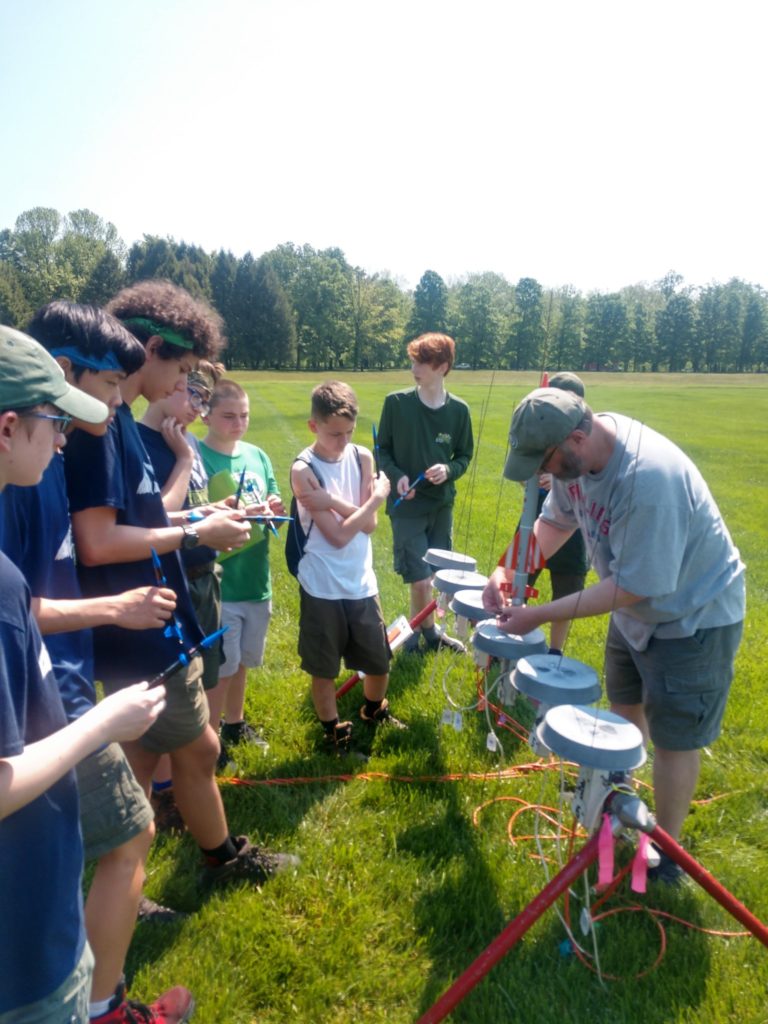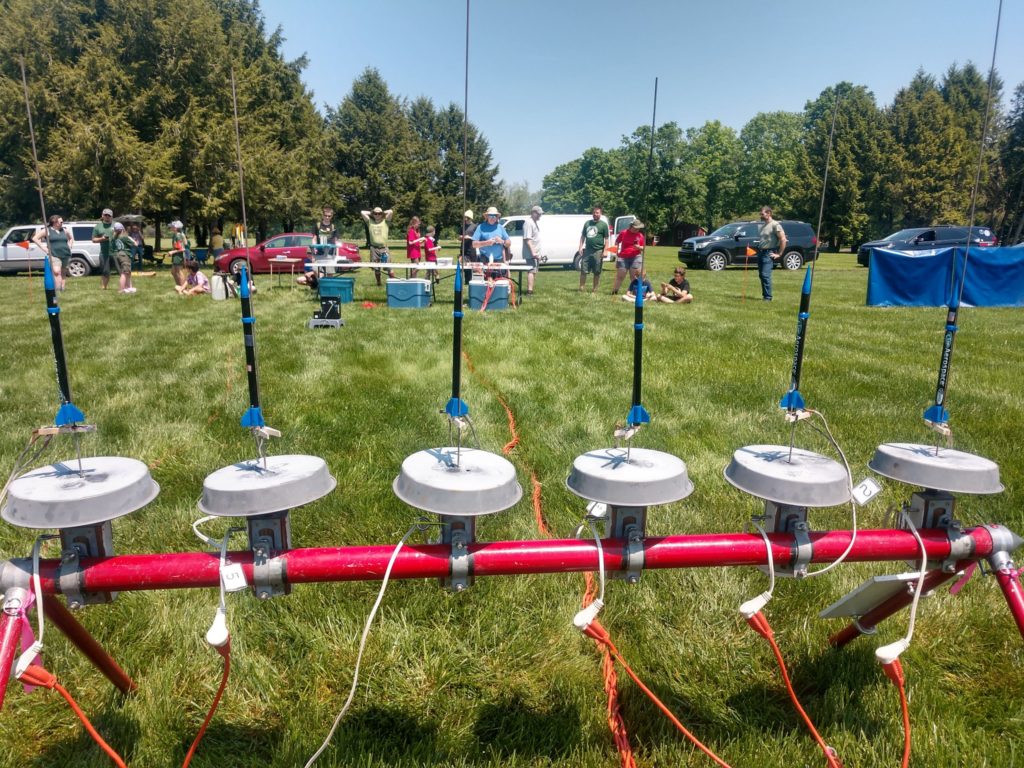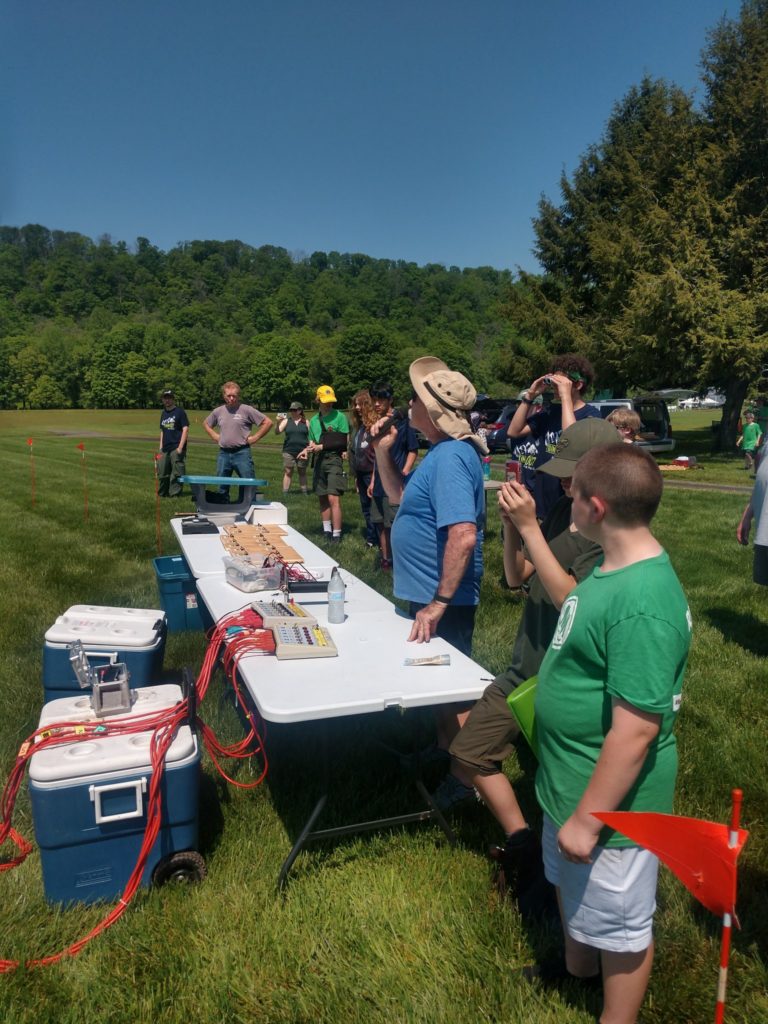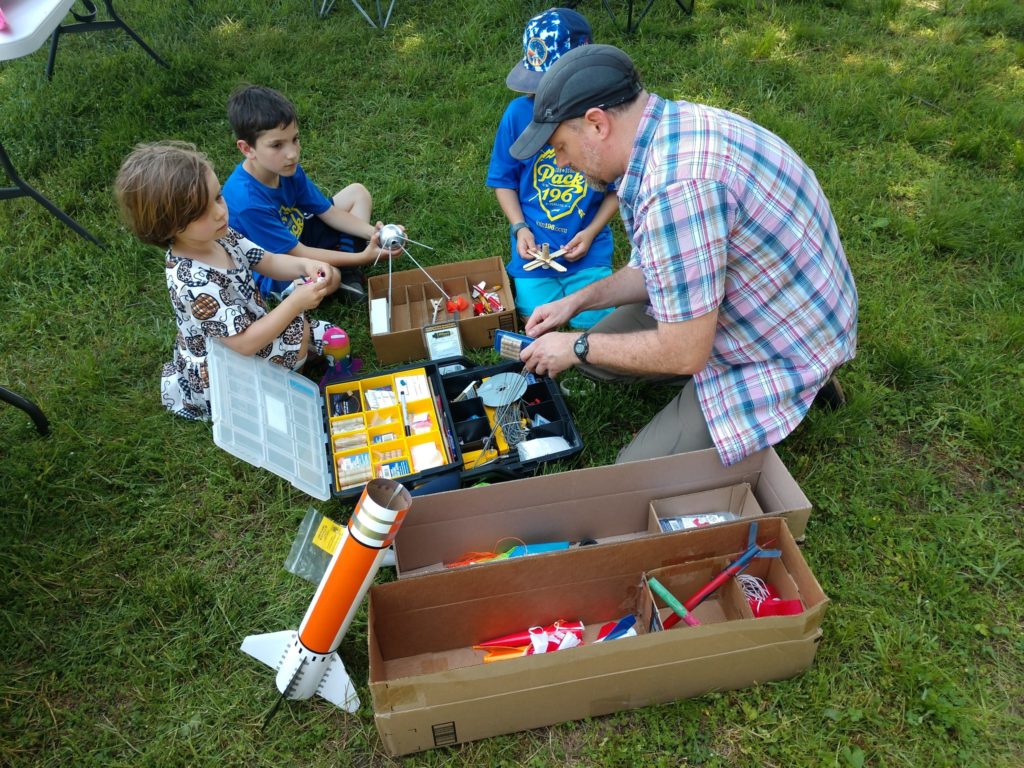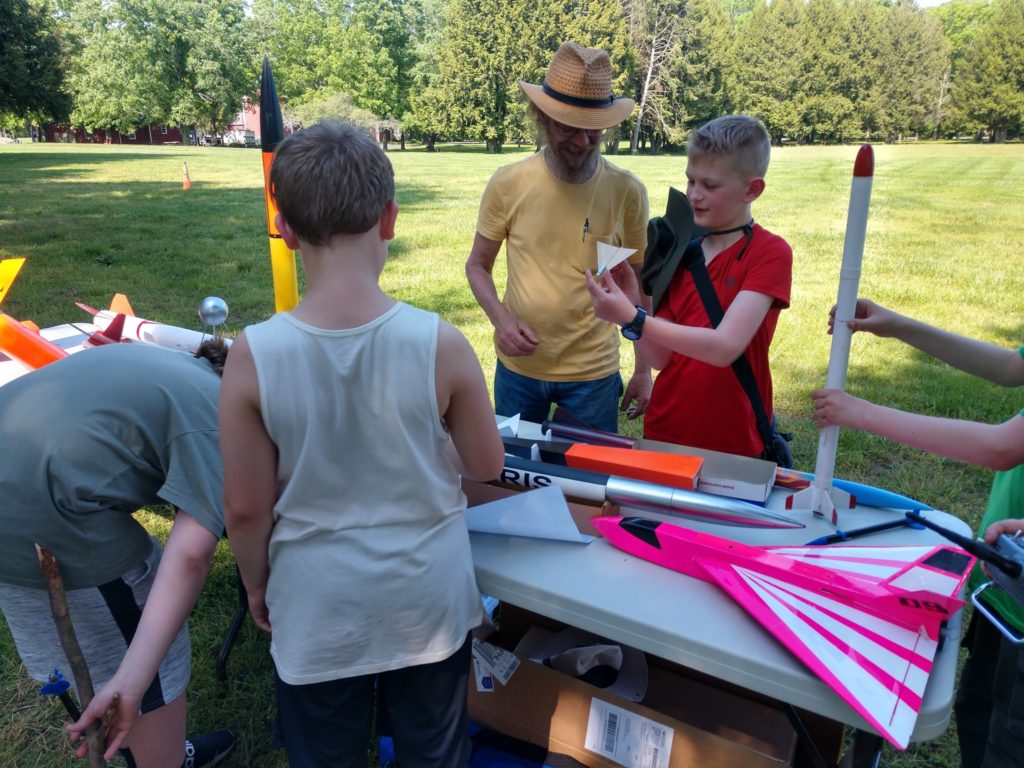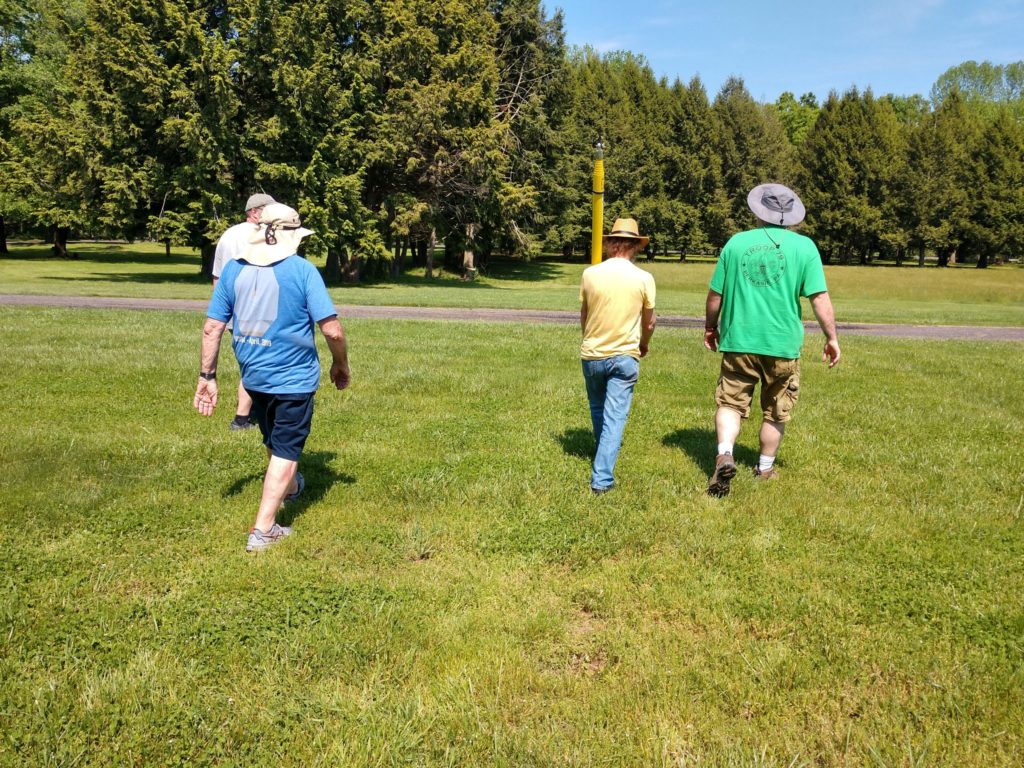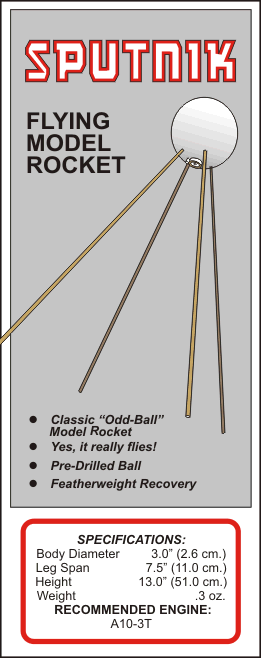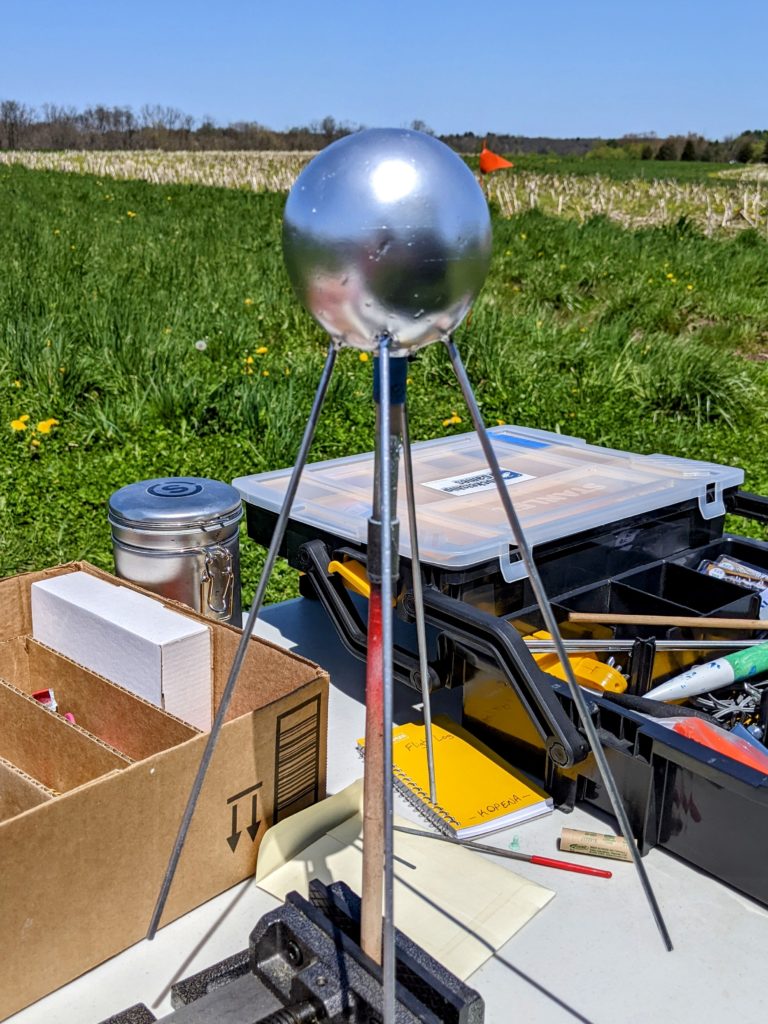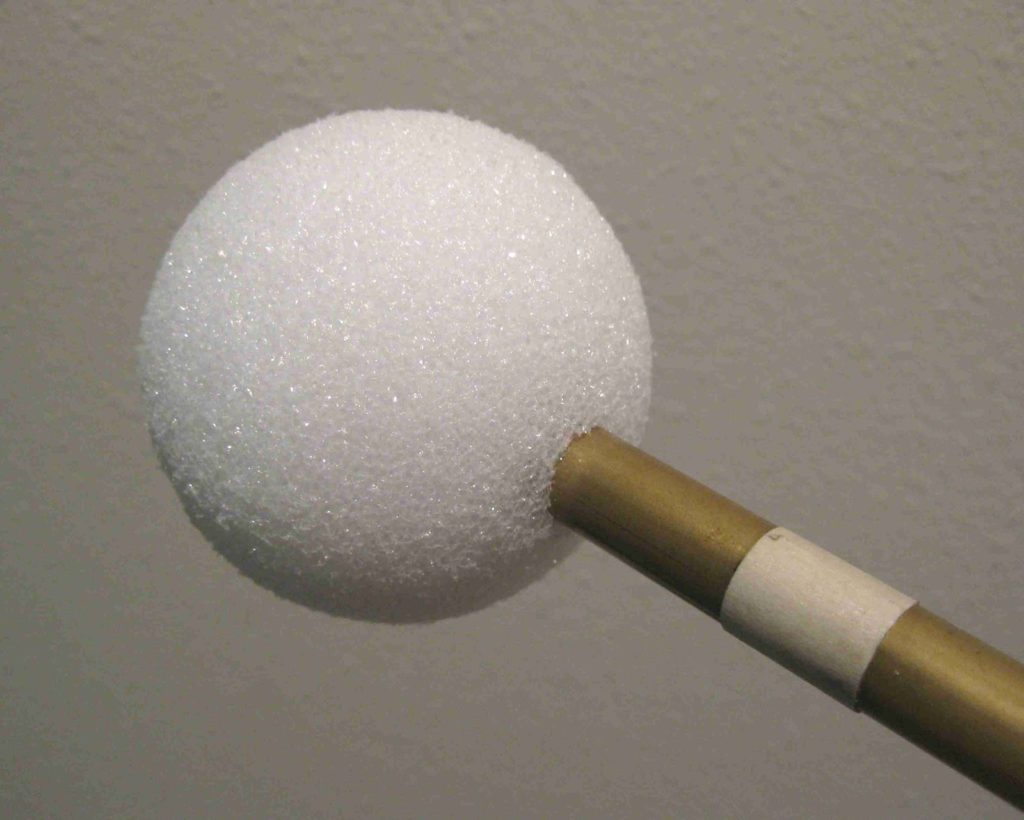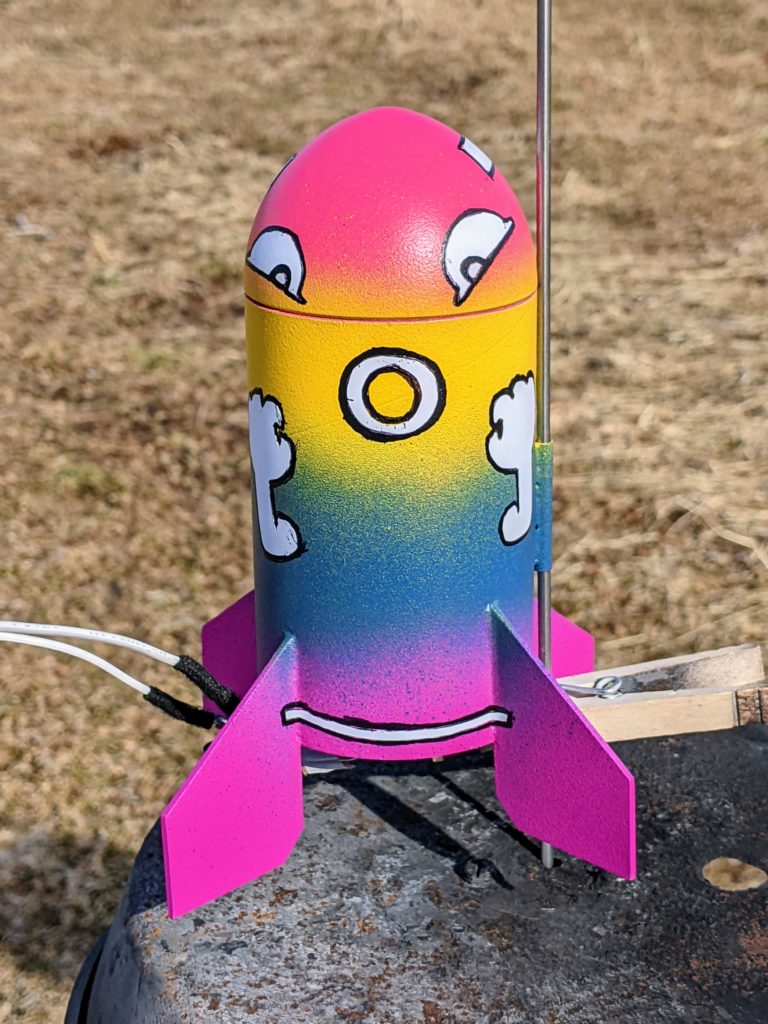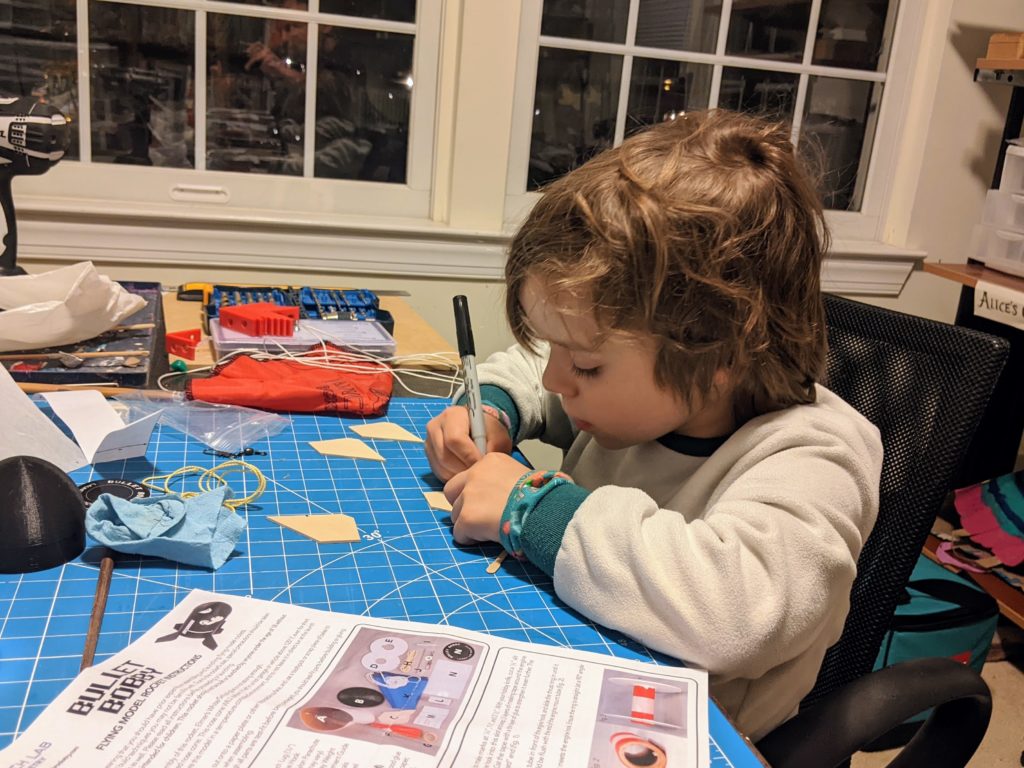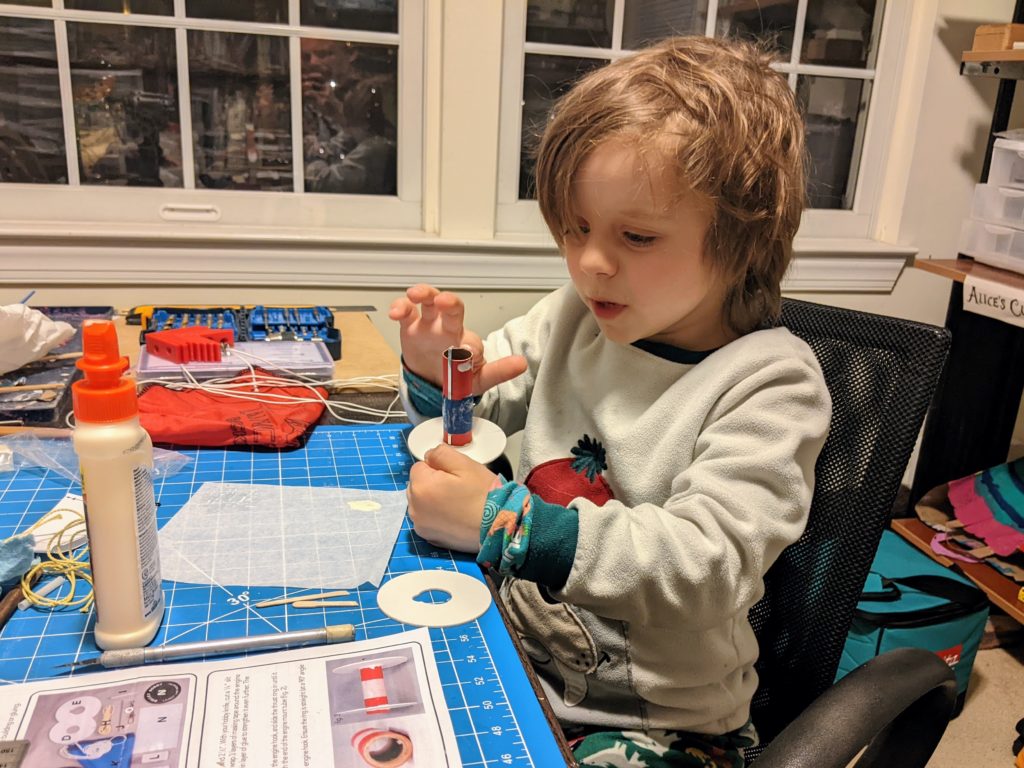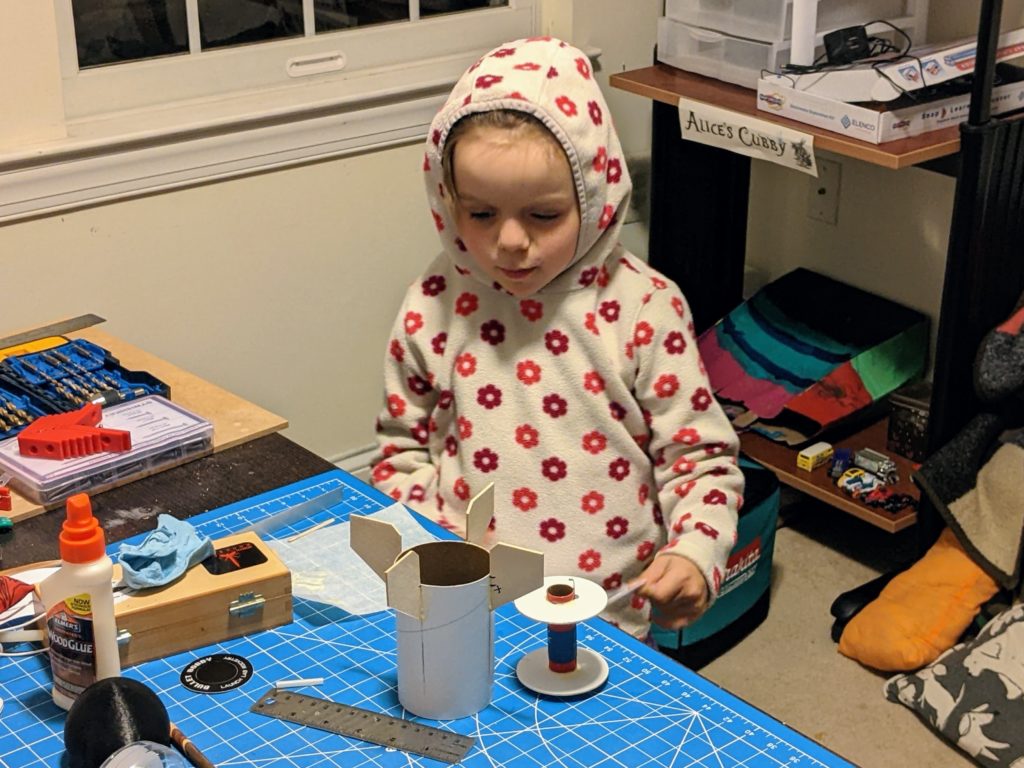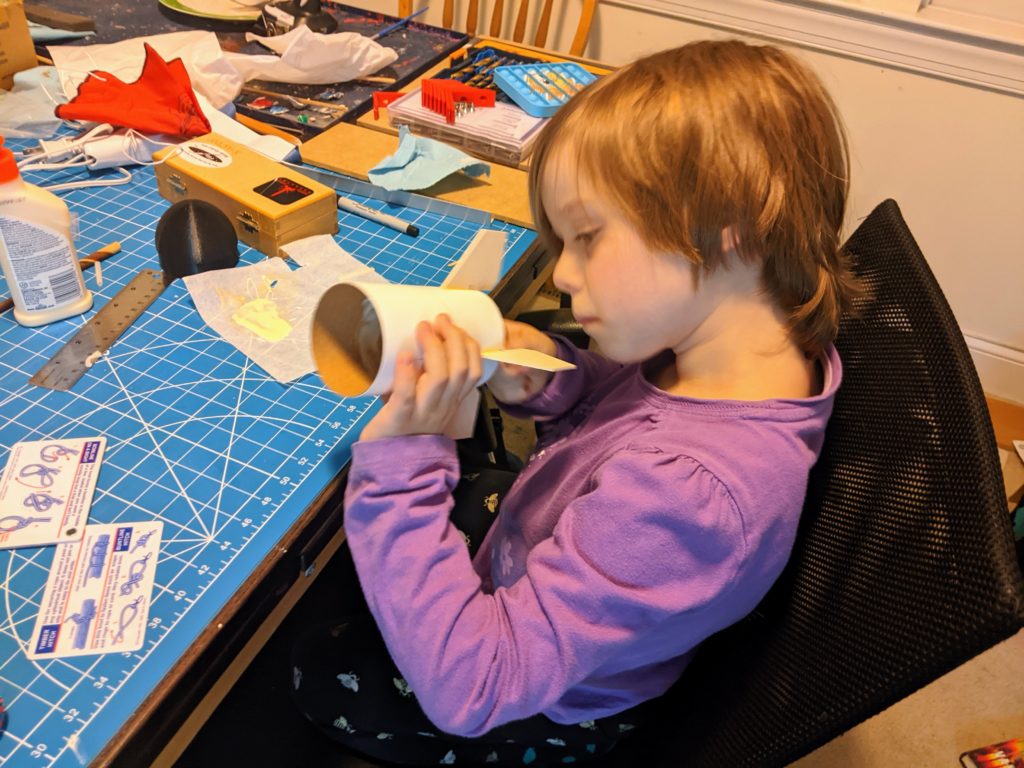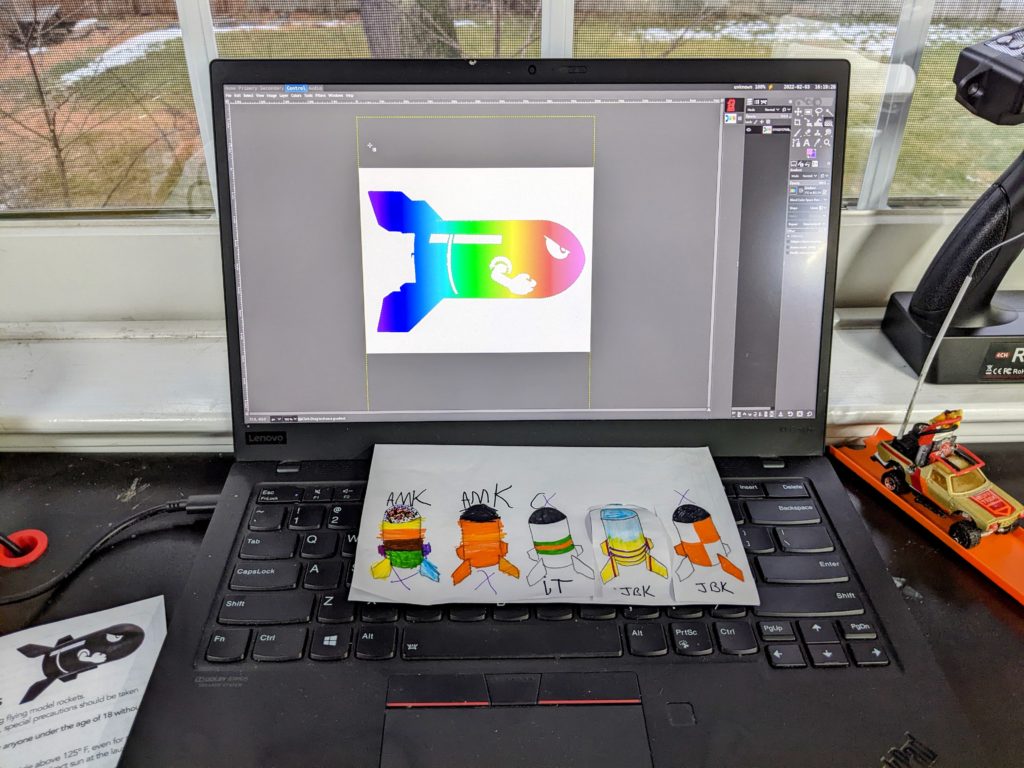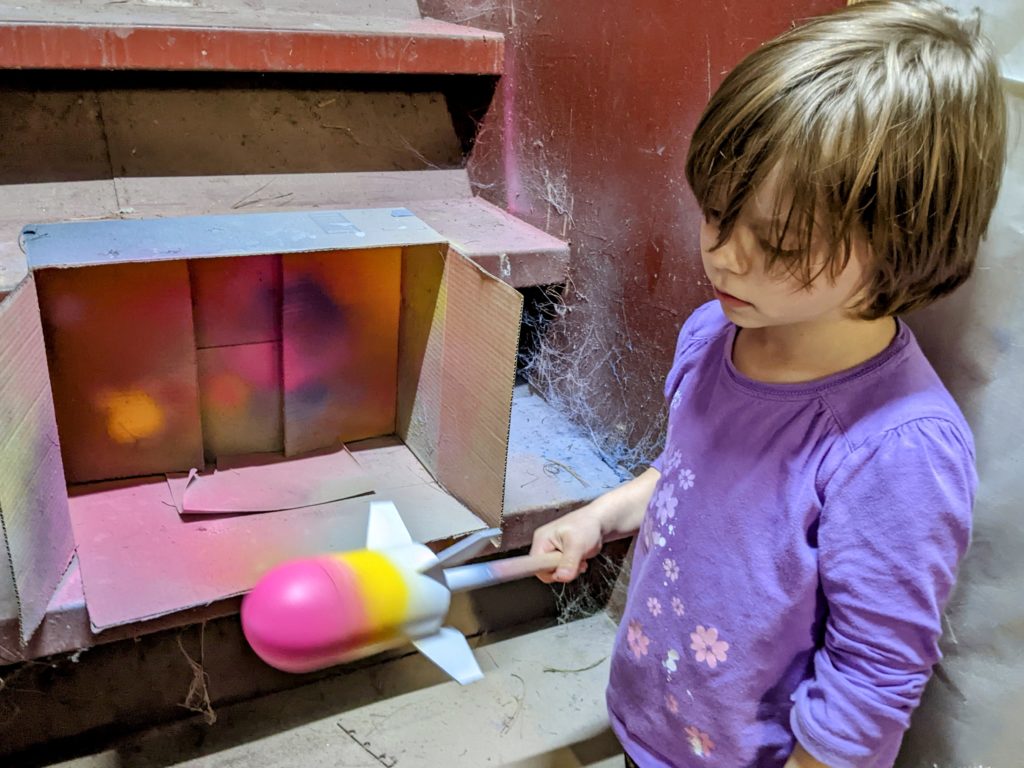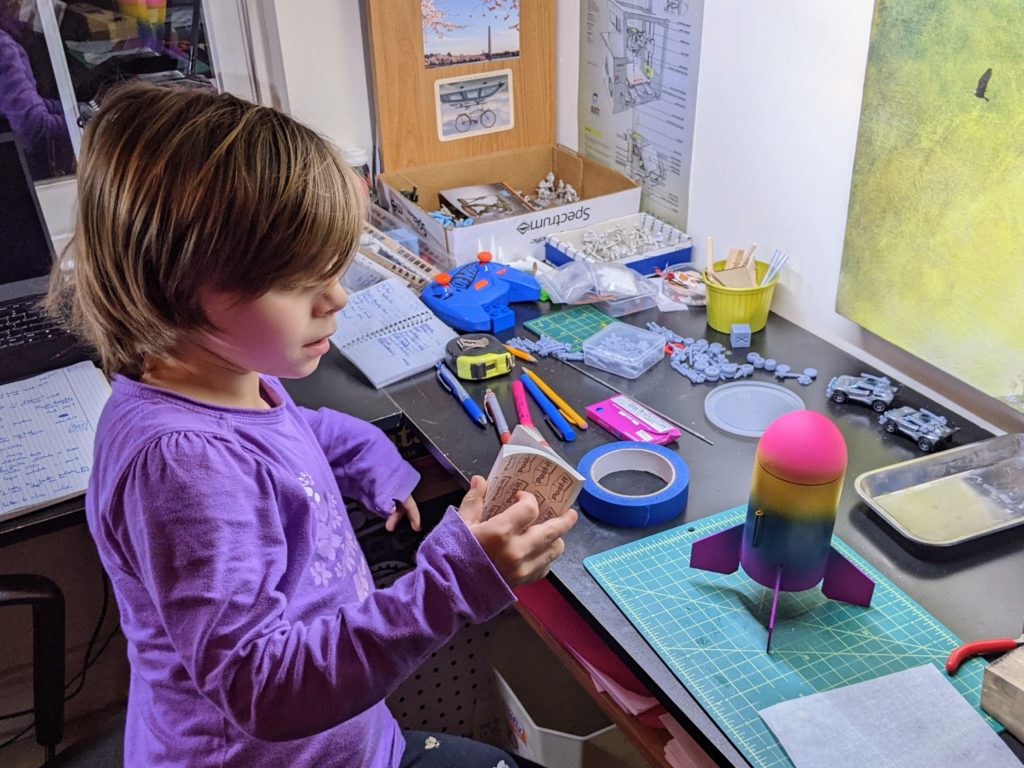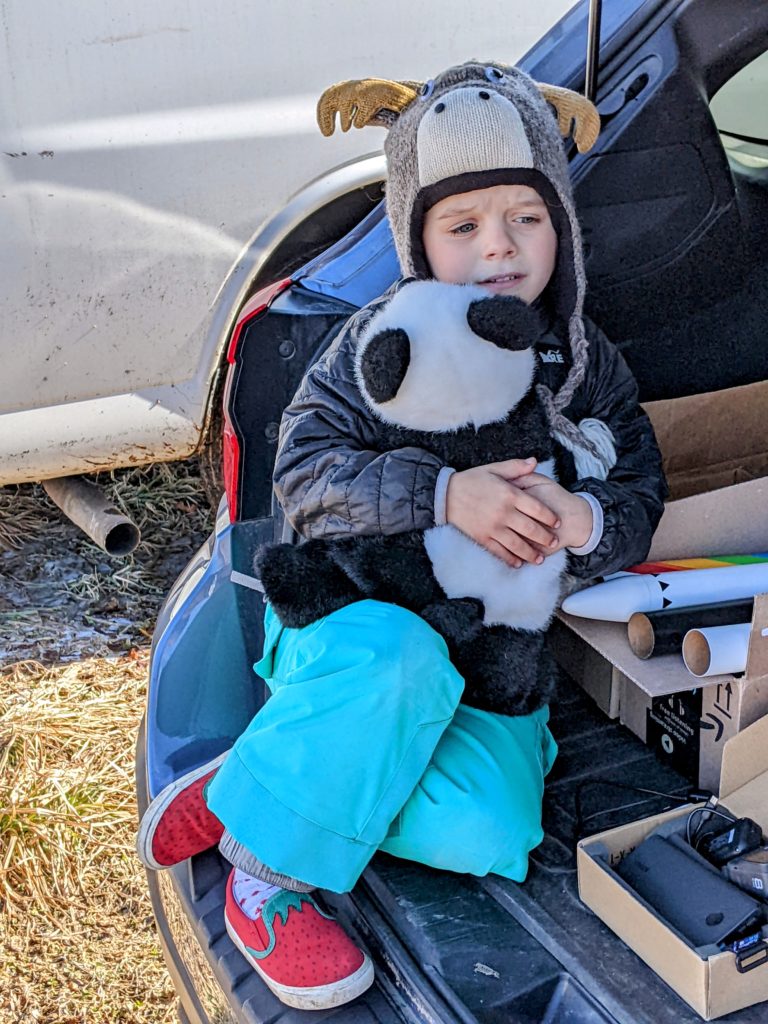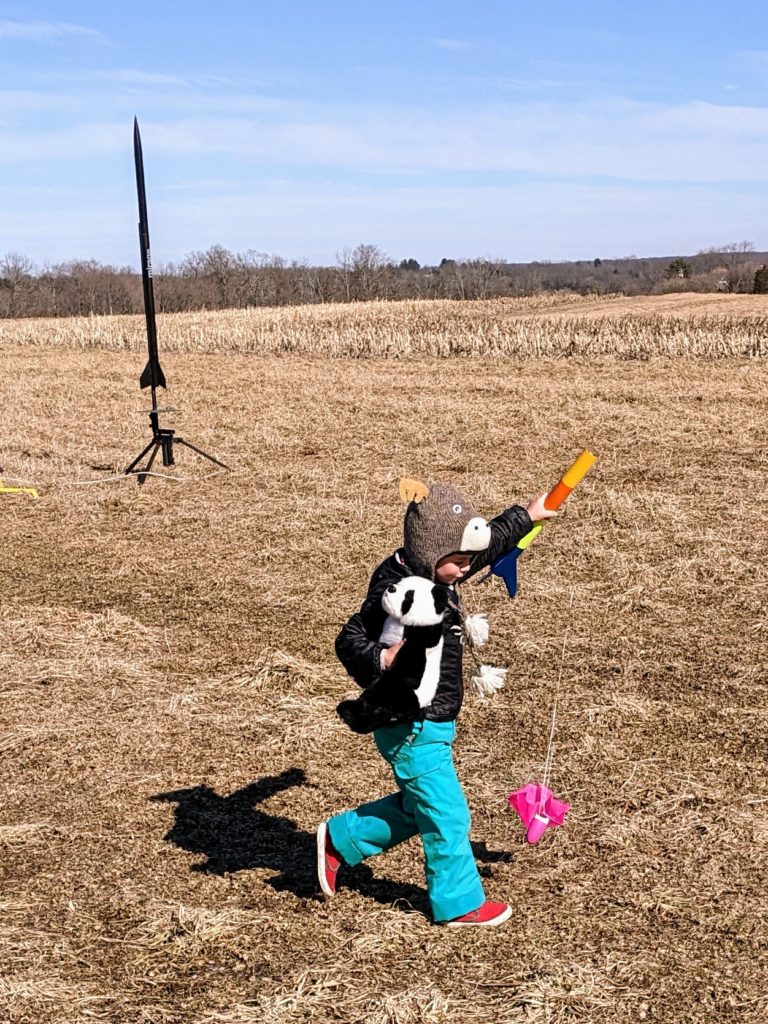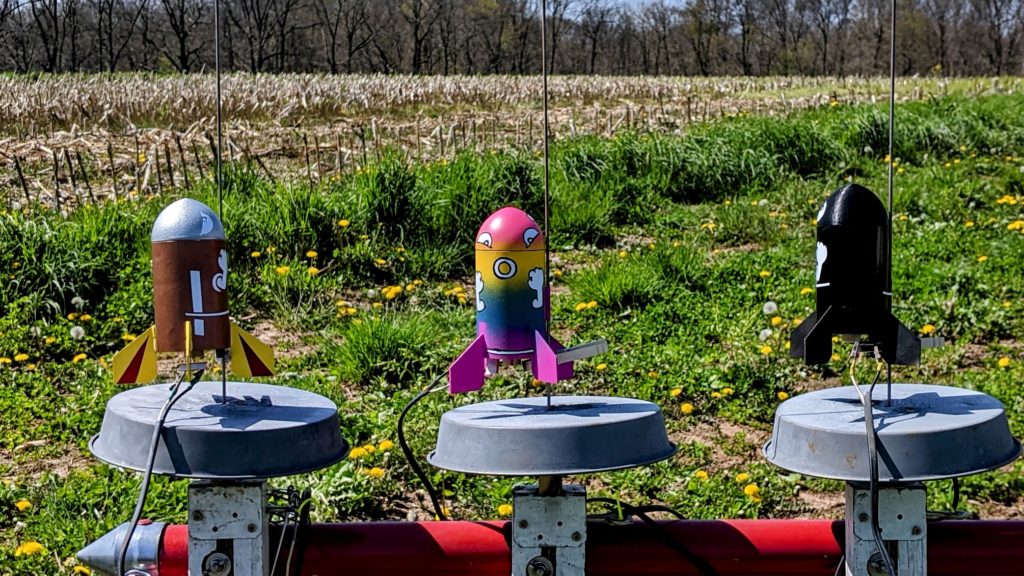This weekend the Boy Scouts’ Tohickon District held their Spring Camporee. One of the activities was earning a “Space Exploration” merit badge and the leaders had asked PARA if we’d do some demos and help out. It was held at Tinicum County Park, about an hour north of Philadelphia, which none of us were familiar with but turned out to be very close to the farm at which we usually launch. We didn’t quite know what to expect of the event or venue going in, but it was a great day all around. Weather-wise we got bluebird skies, no wind in the morning, and just enough shade and breeze later to not be insufferably hot. Tinicum Park turned out to be a very nice launch field for small to medium rockets. PARA also had good turnout, with 8 people there to help and hang out.
The photos here are a sampling of Ken’s.
Ken got the scouts to change the launch site on the field to a much better one, as well as to revise their schedule quite a bit, and really enabled a much smoother, better paced day. The scout leaders were happy to use our launch racks to further streamline, and Jim kept them all flying expeditiously with waves of twelve at a time. With the racks and the safety flags and some banners and everything, the scouts clearly all thought this was a big-time serious launch. Between all of us we setup four display tables overflowing with rockets, everything from Jim’s ~14ft 40+lb L3 certification rocket, to a whole pile of micro-rockets. Walt had made some posters about different motors and other rocketry aspects, and Steve’s Saturn V was a much appreciated prop for the scouts’ lectures. The two of them had steady business all day talking about the rockets on display. Fortunately, despite some high spirits and exuberance, our collection suffered only two casualties, micro-rockets that blew off the tables and got stepped on. Chris and Bill helped with setup/teardown and pre-flight checks of all the scouts’ rockets. Alice and I worked with some scouts not enrolled in their program to launch a few of our rockets, and conducted extensive comparative testing of the several types of cookies Walt had baked.
My count was 58 launches:
- 46x scout launches
- 4x Steve demo launches on As and Bs
- 7x Joe & Alice demo/spectator launches (Doorknob E20-4 x2, Sputnik A10-PT x2, Spirit C6-5, Vortico A8-3, R6 Alice’s Star Rocket Micromaxx)
- 1x Jim spool launch, I think on an F67, which absolutely 100%, totally ensured representatives from the polo match going on in the other section of the park would come right on over and politely but firmly ask us to stop scaring the horses
In all those launches only two rockets got hung-up in trees. Of course they were mine and Alice’s. Her Spirit drifted too far on quickly growing winds in the late morning, and my Doorknob drifted in a totally unexpected direction and just barely snagged the tip of a tree. This cast a bit of a pallor over lunchtime as its kit, electronics, and other accessories added up to about ~$250 just swaying in the breeze. Fortunately the wind continued to pick up as the afternoon went on, meaning we didn’t launch any other big rockets, but it knocked down the Doorknob! When I checked on the rocket mid-afternoon it had fallen another 20ft or so through the trees and we were able to snag it with the club’s 40ft pole. Two fins shattered in the process of pulling it free but are repairable, and the important thing was getting back the electronics. After that success the recovery team got motivated and successfully retrieved Alice’s Spirit, continuing that rocket’s exciting life—it was built by Alice at a club launch after Mike & Andrea gifted it to her and was immediately lost amid the summer corn, but found randomly at the next month’s launch by somebody looking for a different rocket entirely.
Having both rockets back in hand ensured an upbeat ending to a good day, and at Alice’s request we wrapped it up by heading off to her favorite post-launch pizza stop.
